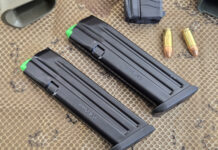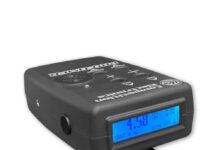
In the first article of this series we talked about getting started with a pandemic garden and what I did personally.
Now let’s talk about my first few outside plantings for this year.
Snap Peas
My first great and reinforcing victory this year has been sugar snap peas. I had grown them with limited success in the window before and enjoyed them, so I decided to make that my first outdoor trial for the year.
I planted the seeds in the bed next to the house on March 8th. I’m in Zone 6 [link to map], and if you don’t know what that means, you should consult the USDA hardiness map. You might as well bookmark that page if you are going to be doing your own garden – you’ll need that information.
It was a little early, but the wives tale about planting peas “by St Patrick’s Day” worked out for me. All I did was loosen the soil in what was originally intended to be flower bed next to the house – no hardcore digging. The peas I planted were a bush variety called “Sugar Ann” which shouldn’t have required a trellis, but I added a section of short wire decorative fencing that was lying around from a project a decade ago. That offered some support in case they got big and needed to climb or hang on anyway.
Peas are frost tolerant and it’s a good thing, because we had several frosts and even a couple skiffs of snow before the weather final broke in the middle of May. (We had snow on May 8th and frost on Mother’s Day). I think the position next to the south-facing house wall helped with shelter and temperature modulation in that regard. “Microclimates” is another thing I’m learning about.
I also started a garden journal to keep track of important details like that. This is something for you to consider too, as you’ll find that after a while your memory fails as to what exact date you did what, what worked and what didn’t from year to year.
I had my first harvest of snap peas by the end of May and it has continued for several weeks. These are an edible pod variety and are great in even the simplest of meals. I’ve dropped some snap peas into the boiling ramen water on nights when I didn’t feel like actually cooking, I’ve put them in a venison stir fry, and I’ve blanched and frozen some for future use.
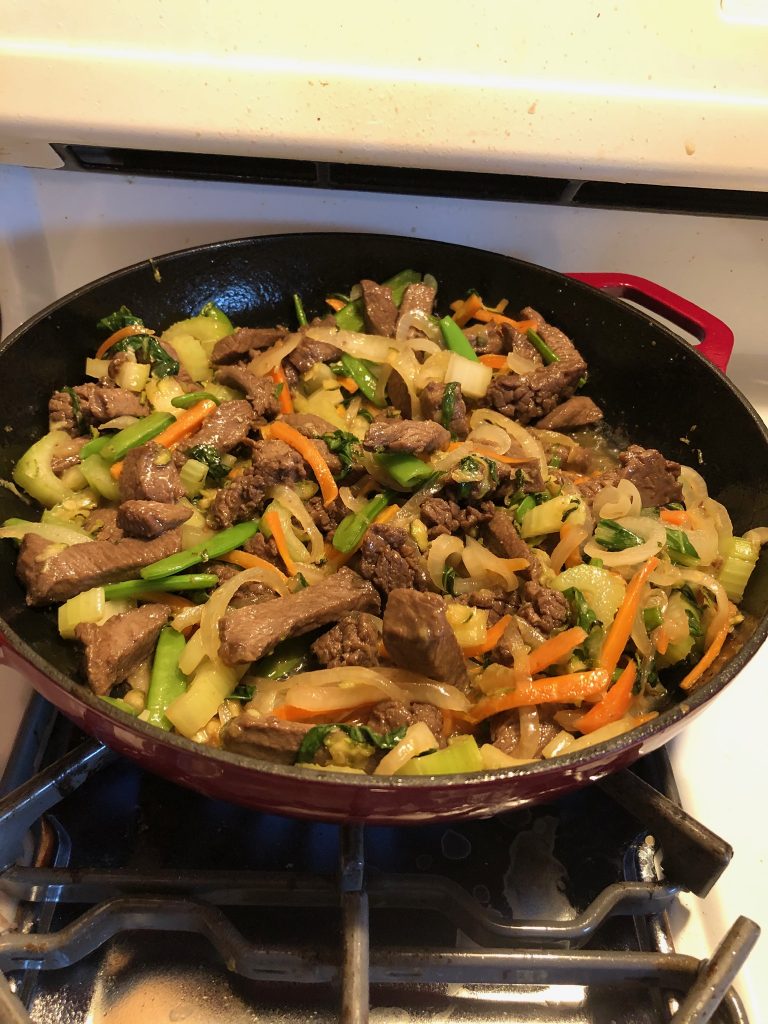
These snap peas grew with zero tending after dropping the seeds in the ground, and have produced like crazy. In addition, since peas are legumes and nitrogen-fixers, they will help fertilize the ground in this bed for whatever I decide to plant there next.
Peas like cooler weather and are usually done when it starts to get really hot. But you can sometimes get a second crop in the fall before frost if you replant. I’m considering that since they were so easy. At this point everything is still an experiment for me. Snap peas were a huge win and are now a permanent part of my garden arsenal!
Carrots
My next outdoor gardening experiment was carrots. Carrots are a staple in my cooking – from stir fry to pot roast to soup to just nibbling. I’ve tried to grow them for a couple years but haven’t had much luck making them happy indoors in pots. All I got was little stunted nubs. They were better than nothing but not very satisfying to the gardener soul.
This year I tried them outdoors in a big storage tub. I planted them early – maybe a bit too early if truth be told. We had a spate of nice weather in March and I got ambitious. But then it got cold again. Fortunately, carrots are pretty frost tolerant too.
After a slow start these carrots seem to be taking off in the tub in my fenced-in area. They aren’t quite ready yet – I’m thinking another couple weeks – but I have higher hopes this year than I have had before.
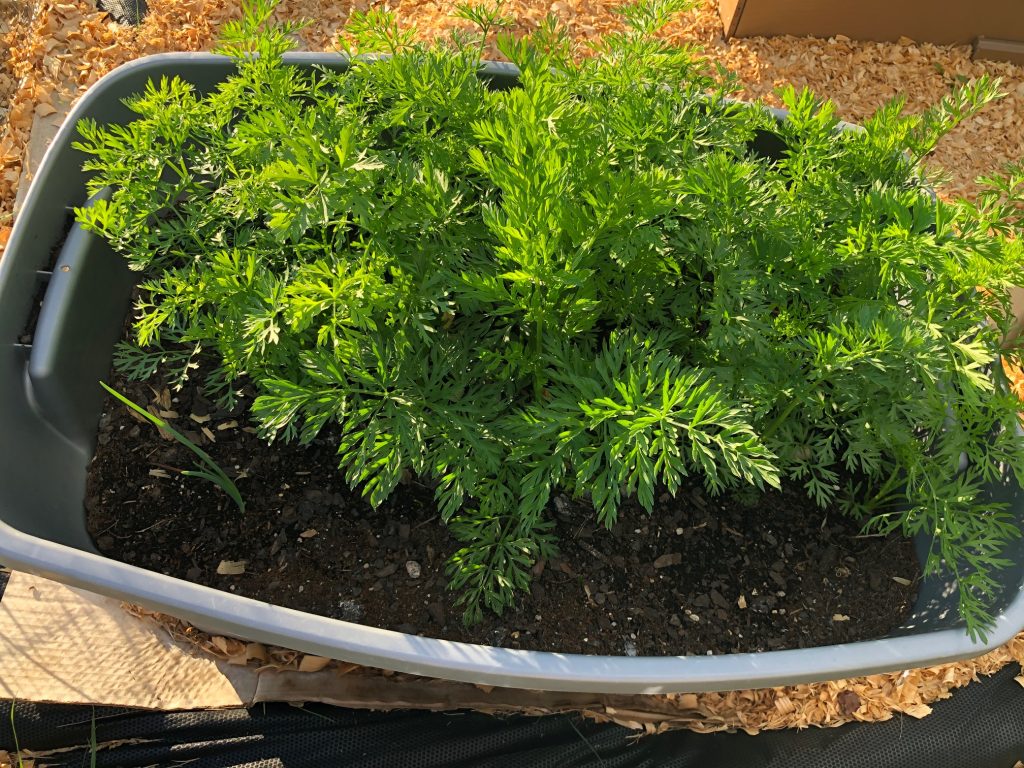
If I have a decent carrot yield I plan to dehydrate them in slivers and slices for longer term storage, though they will keep in a dark cool area, or even in the garden through frost. I have read that carrots are another vegetable that you can often get a second crop from in the fall, so I’ll try replanting in another month or two. That also means that for those of you who haven’t yet put in a garden, there is still time for you before the snow flies!
Cabbage
Cabbage is another vegetable that I use in a variety of dishes – cole slaw, stir fry, soup, fried cabbage and noodles, the list goes on. It dehydrates well too. I have grown small heads with success in my window, but this year I wanted to try cabbage outside as well. I planted from seed in another storage tub, figuring I could get two full size heads per tub. It germinated quickly in March, survived frost and snow, and it seems to be quite happy in its plastic home. it will be another month or so until I can harvest, but in the meantime I’m going to be harvesting my window crop (which I planted in February), and then starting another, so I have staggered yields.
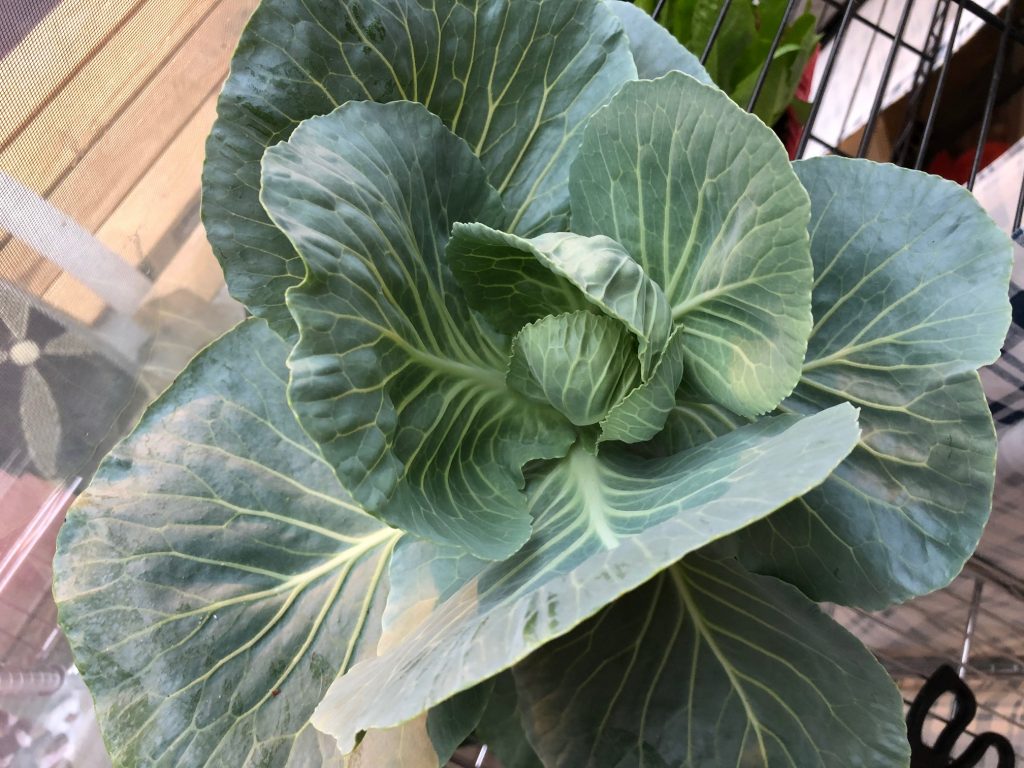
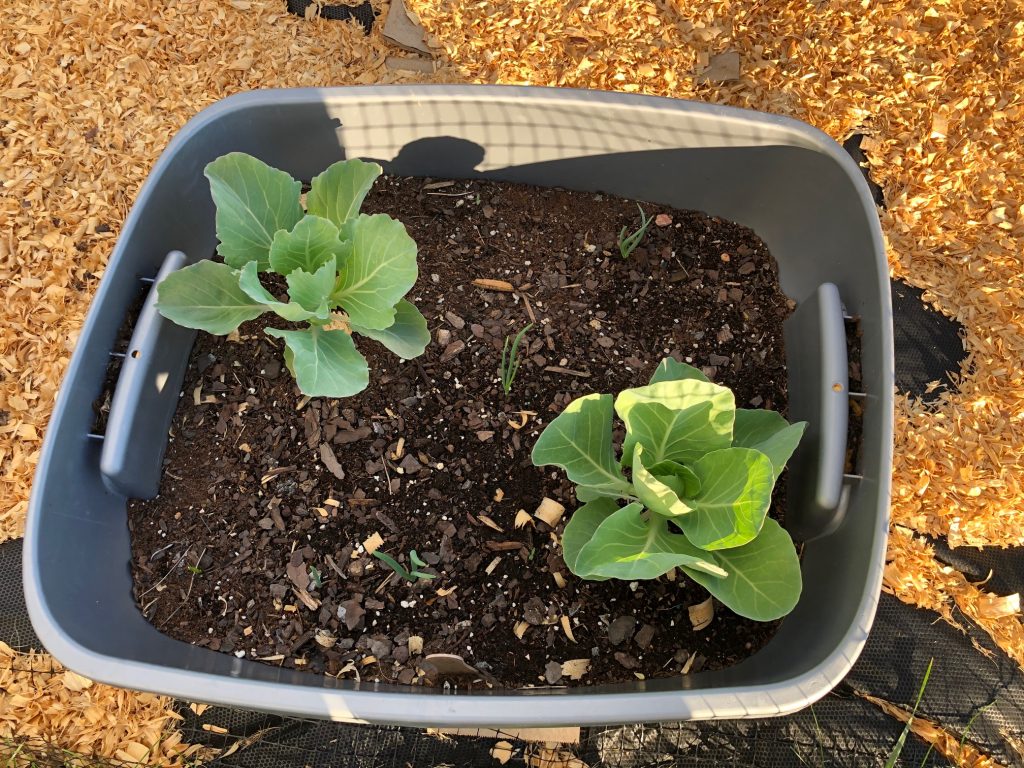
Succession planting
Cabbage is yet another vegetable which you can get a fall season out of, so I’ll be replanting that in the pea bed as soon as those are done. Rotating crops and succession planting like that is another whole thing I’m currently learning about.
You can get more out of the same square footage of garden by planting crops one after another in the same growing season, as long as you pay attention to which types can follow which. It’s important to rotate in order to keep down pests and also refresh the soil with different types of plants to maintain soil and crop health. It also cuts down on the need for chemical fertilizers and pesticides.
So with that in mind, I’m planning on putting cabbage in the pea bed (because peas fix nitrogen, and cabbage are heavy feeders), then put carrots (light feeders) where the cabbage was, and put the next batch of peas a few feet farther over in the bed, where the squash grew last year. Then next year I’ll put bush beans (nitrogen fixers) in the tub where the cabbage and then carrots were to help refresh that soil.
I may need to start marking my tubs with numbers or letters so I can tell them apart next year for crop rotation. That’s another reason to keep a garden journal. I will never be able to remember my succession rotation otherwise!
Stay tuned for the next article in this series where I talk about more container growing.

